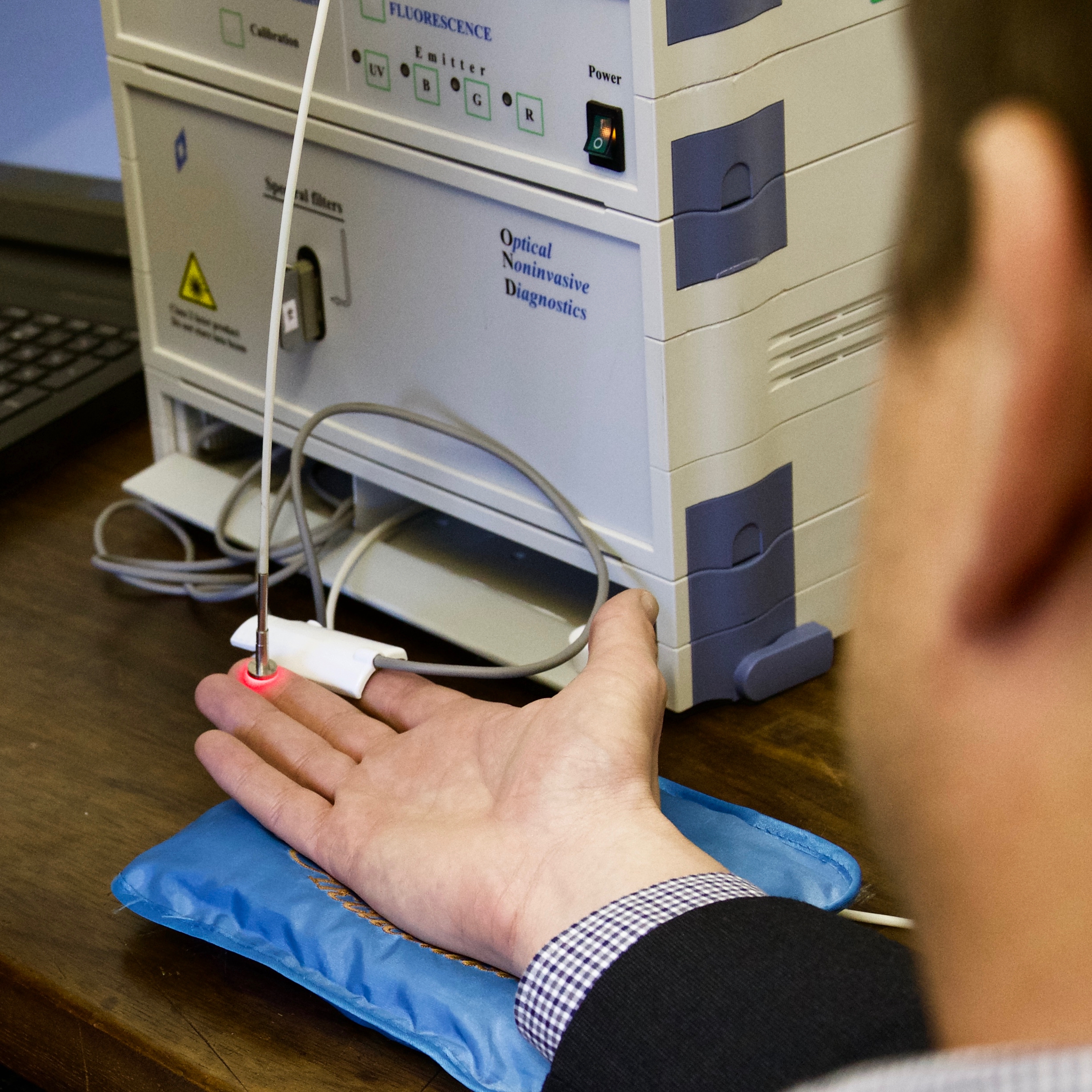
A Star Trek-type medical tricorder, diagnosing medical problems at the push of a button, could be a step closer to reality.
Researchers at Birmingham’s Aston University have developed a working desktop prototype of a machine which can take readings from blood and human tissue using laser beams.
It has been successfully trialled at Ninewells Hospital in Dundee while a portable prototype – with applications beyond medicine – is being worked on.
 Researchers have created a device they believe will have both medical and non-medical applications (Aston University/PA)
Researchers have created a device they believe will have both medical and non-medical applications (Aston University/PA)
Developers at the Aston Institute of Photonic Technologies (AIPT) said it allows a range of tests to be carried out “quickly and painlessly”.
The innovation means the once fanciful idea – depicted in sci-fi show Star Trek – of doctors using tricorders to effortlessly diagnose a variety of ailments may soon become reality.
The machine uses three separate lasers to monitor how effectively blood is delivered to tissue, measure blood-oxygen levels and look at cell metabolism.
It works by shining the laser beam on the patient’s skin, while the patient feels nothing.
That data is then instantly processed by a computer, and re-produced as a graph.
The device has already had practical applications, being used in diagnostic procedures for strokes and skin cancers, and is non-invasive, as no needles are necessary.
It can constantly monitor blood delivery above the eyebrows, helping doctors mitigate the risk of stroke in patients with hypertension.
In cancer patients, researchers have said it is a high-precision way of identifying the margins of head and neck skin cancers, which could help reduce the risk of tumours returning.
A prototype wearable monitor has been developed that athletes can wear on their wrists.
Much of the technology is ready to go into production, and the university recently launched Aston Medical Technology to commercialise inventions.
Professor Edik Rafailov, of AIPT, said: “This technology will allow a range of tests to be taken quickly, painlessly and without any reason for patients to feel nervous – there are no needles involved.
“Results are instantaneous, which is better for patients and more efficient for healthcare providers.”
His colleague and senior research fellow, Dr Sergei Sokolovsky, said: “We have managed to bring together multiple technologies in a machine that is compact, simple to use and – from a patient’s perspective – extremely user-friendly.
“It is a huge step forward in terms of improving the speed of diagnostic work and also in terms of reducing invasive tests.”


Why are you making commenting on The Herald only available to subscribers?
It should have been a safe space for informed debate, somewhere for readers to discuss issues around the biggest stories of the day, but all too often the below the line comments on most websites have become bogged down by off-topic discussions and abuse.
heraldscotland.com is tackling this problem by allowing only subscribers to comment.
We are doing this to improve the experience for our loyal readers and we believe it will reduce the ability of trolls and troublemakers, who occasionally find their way onto our site, to abuse our journalists and readers. We also hope it will help the comments section fulfil its promise as a part of Scotland's conversation with itself.
We are lucky at The Herald. We are read by an informed, educated readership who can add their knowledge and insights to our stories.
That is invaluable.
We are making the subscriber-only change to support our valued readers, who tell us they don't want the site cluttered up with irrelevant comments, untruths and abuse.
In the past, the journalist’s job was to collect and distribute information to the audience. Technology means that readers can shape a discussion. We look forward to hearing from you on heraldscotland.com
Comments & Moderation
Readers’ comments: You are personally liable for the content of any comments you upload to this website, so please act responsibly. We do not pre-moderate or monitor readers’ comments appearing on our websites, but we do post-moderate in response to complaints we receive or otherwise when a potential problem comes to our attention. You can make a complaint by using the ‘report this post’ link . We may then apply our discretion under the user terms to amend or delete comments.
Post moderation is undertaken full-time 9am-6pm on weekdays, and on a part-time basis outwith those hours.
Read the rules here